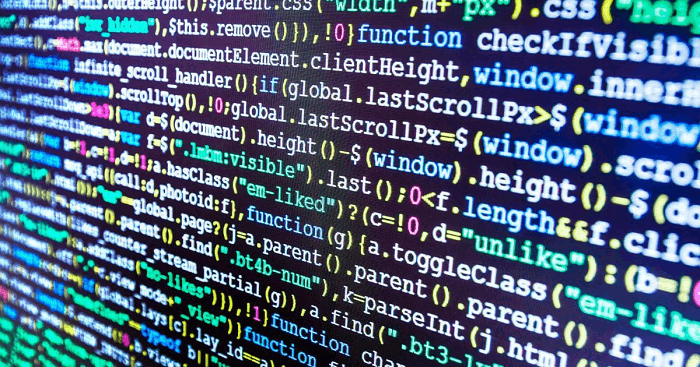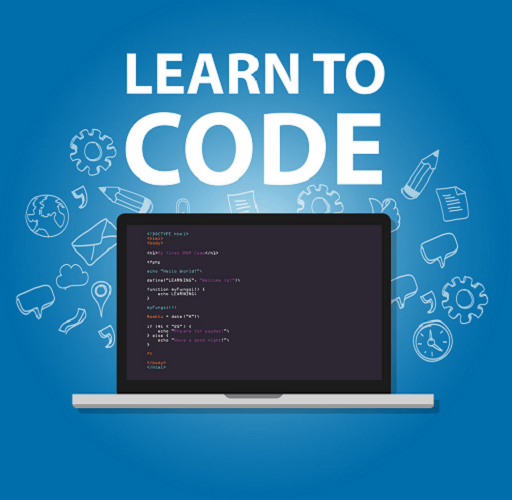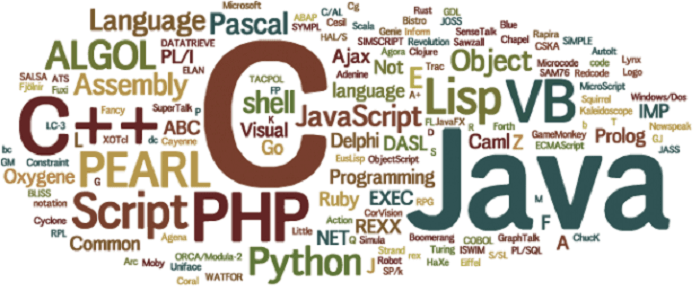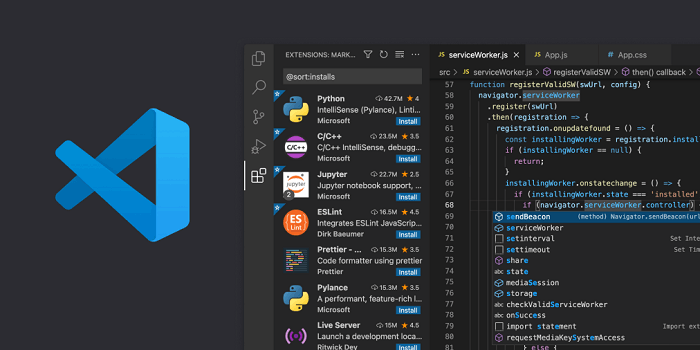What is Code?
Code refers to a set of instructions that a computer can understand and execute. These instructions are written in a programming language, which is a formal language used to communicate with a computer. There are many different programming languages, each with syntax, rules, and capabilities.

Programmers and developers write code, and when the computer executes it; it performs a wide variety of tasks, such as displaying text on a screen, performing calculations, connecting to the internet, and more.
Not all code is created equal, and its quality and security can vary greatly depending on the developer's skill and experience. It can also greatly impact the system's performance and safety.
Origin of Code
The origin of code can be traced back to the invention of the first computers in the 1940s. Early computers were programmed using machine code, a set of instructions directly executed by the computer's hardware. These instructions were written in binary, a system of digits consisting of 0s and 1s, that the computer could understand.
However, the need for more human-readable languages became apparent as computers became more powerful and versatile. This led to development of high-level programming languages, such as FORTRAN and COBOL, which allowed programmers to write code using English-like commands and mathematical notations.
The first computer programs were written during this time to perform specific tasks such as scientific research, military operations, and business data processing.
The first computer programs were developed as a part of the early computing machines, such as the abacus, the Jacquard loom, and the difference engine, which were used to perform calculations and automated tasks.
Over time, more and more programming languages were created, each with its strengths and weaknesses. Today, hundreds of programming languages are in use, with new ones being developed all the time.
Basic Concepts of Coding
Coding, or programming, creates software, applications, and computer programs using a specific programming language. The basic concepts of coding include the following:
1) Syntax: The set of rules and structure that must be followed when writing code in a specific programming language.
2) Variables: A named storage location for data that can be modified and reused throughout a program.
3) Data types: Different types of data, such as numbers, strings, and Boolean values, can be used in a program.
4) Control structures: Ways to control the flow of a program, such as loops and conditional statements.
5) Functions: A reusable block of code that performs a specific task.
6) Libraries and frameworks: Pre-written code that can perform common tasks, such as handling user input or accessing databases.
7) Debugging: The process of identifying and correcting errors in code.
8) Algorithms: A set of steps or instructions that can be followed to solve a problem.
These concepts are fundamental to all programming languages, and a basic understanding of them is essential for anyone learning to code.
Advantages of Code
Code, or computer programming, offers many advantages, including:
1) Automation: Code can be used to automate repetitive or time-consuming tasks, allowing people to focus on more important and complex tasks.
2) Efficiency: Code can execute tasks much faster and more accurately than humans, making it an efficient tool for many applications.
3) Scalability: Code can be easily scaled up or down to accommodate changes in demand, making it a flexible tool for businesses and organizations.
4) Reusability: Code can be reused in multiple projects, saving time and effort in development.
5) Standardization: Code can provide a standardized way of doing things, reducing errors and improving consistency.
6) Innovation: Code allows for the creation of new and innovative software applications and technologies that can change how we live and work.
7) Customization: Code can be customized to meet specific requirements or preferences, allowing for greater software applications and systems personalization.
Code is a powerful tool that offers many advantages for businesses, organizations, and individuals. It has become an essential part of modern life and is used in various applications, from simple scripts to complex software systems.
Limitations of Code
There are several limitations to code, including:
1) Creativity: While code can automate repetitive tasks and solve complex problems, it could be more creative. Using code to develop new and innovative ideas that push the boundaries of what is currently possible can be challenging.
2) Dependency on Tools and Frameworks: Code often relies on specific tools and frameworks to function, limiting the code's flexibility and adaptability. Changes to the underlying tools or frameworks can require significant changes to the code itself.
3) Lack of Human Touch: Code is written in a language that is designed for computers rather than humans. This can make it difficult to create code that is easy to understand, maintain, and modify.
4) Limited Understanding of Context: Code is limited in understanding context and nuance. Creating code that considers the full range of human experience and behavior can be challenging.
5) Errors and Bugs: Code can contain errors and bugs that can cause the software to malfunction or fail. These issues can be difficult to identify and fix, leading to high costs and delays.
6) Dependence on Infrastructure: Code depends on infrastructure, such as servers, networks, and databases, to function. Issues with the underlying infrastructure can cause problems with the code.
7) Limitations of Programming Languages: Different programming languages have different strengths and weaknesses and may need to be better suited to all applications or projects.
While code can be a powerful tool for automating tasks and solving complex problems, it has its limitations. It is important to carefully consider these limitations when deciding whether or not to use code for a particular application or project.
Types of Code in Programming
There are several types of code used in programming, including:
1) Source code: The original human-readable code that programmers write in a programming language.
2) Machine code: The binary code executed by a computer's processor. A compiler or interpreter from the source code generates machine code.
3) Bytecode: An intermediate code form used in some programming languages, such as Java. A virtual machine executes bytecode rather than directly by the computer's processor.
4) Scripting code: A type of code used to automate tasks or add functionality to a larger program. Examples of scripting languages include Python, JavaScript, and Ruby.
5) Markup code: A type of code used to format text and other elements in a document, such as HTML, XML, and LaTeX.
6) Object code: Compiled code must still be linked into a final executable program.
7) Assembly code: A low-level programming language used to write code very close to the machine code that the computer's processor executes.
These are just a few examples of the many types of code used in programming. The kind of code a programmer uses will depend on the specific programming language and the project's requirements.
Why Should You learn to Code?

There are several reasons why someone may choose to learn to code:
1) Career opportunities: Many jobs in the technology industry require coding knowledge, including software development, web development, data analysis, and cybersecurity. Learning to code can open up many career opportunities with good earning potential.
2) Problem-solving: Coding is a valuable skill for problem-solving and critical thinking. It teaches you to break down a problem into smaller parts and find a logical solution.
3) Creativity: Coding allows you to bring your ideas to life by creating your software, websites, and applications. It's a great way to express your creativity and make something unique.
4) Demand in the job market: The need for skilled developers is increasing as the world becomes more digitalized. Coding will help you be more marketable and valuable in the job market.
5) Entrepreneurship: Coding can help you create your startup or business. The ability to code gives you the power to build and launch your products and ideas.
6) Understanding of technology: Understanding how code works can give you a better understanding of how technology works and shapes our world.
Learning to code can open up many opportunities and help you develop valuable skills that can be applied in various fields.
How to Start Coding
Here are a few steps which can help you to start coding:
1) Choose a programming language: Many programming languages, such as Python, Java, C++, and JavaScript. Each has strengths and weaknesses, so research to find the best one for your needs.
2) Set up a development environment: You will need a text editor or integrated development environment (IDE) to write and edit your code. Some popular options include Visual Studio Code, Sublime Text, and Atom.
3) Learn the basics: Learn the basic programming concepts such as variables, data types, loops, and control flow. You can find many resources online, such as tutorials, videos, and documentation.
4) Write your first program: Start with a simple program, such as a "Hello, World!" program, to get a feel for the basics of the language.
5) Practice, practice, practice: The more you practice writing code, the better you will become at it. Try working on small projects or participating in online coding challenges to improve your skills.
6) Learn by doing: Try to find a real-life problem and try to solve it by coding; this way, you can apply your knowledge in practice and learn from it.
Different Coding Language

There are many programming languages, each with strengths and weaknesses. Some of the most popular programming languages include:
1) Python: A high-level, interpreted language that is easy to learn and widely used for web development, data science, artificial intelligence, and scientific computing.
2) Java: Java is a popular, object-oriented language for developing enterprise-level applications and Android mobile apps.
3) C++: C++ is a high-performance language for system programming, video game development, operating systems, and low-level applications.
4) JavaScript: A high-level, interpreted language used primarily for creating interactive front-end web applications and browser scripting.
5) C#: An object-oriented language developed by Microsoft and commonly used for creating Windows desktop and mobile apps.
6) C: A low-level language used for system programming and embedded systems.
7) PHP: It is a server-side scripting language for creating dynamic web pages and applications.
8) Swift: A general-purpose, object-oriented language developed by Apple and commonly used for creating iOS and macOS applications.
9) R: A data analysis and statistics language commonly used in finance, healthcare, and social sciences.
10) SQL: A domain-specific language used for managing and manipulating relational databases.
These are just a few examples, and many other programming languages are used in various fields. Choosing the right wording for your project depends on the specific requirements and goals of the project.
Different Ways to Write Code
There are many different ways to write code, depending on the specific requirements and goals of the project. Some examples include:
1) Text editors: Using a text editor, such as Notepad or Sublime Text, to write code by hand. This is a common method for writing code and allows for full control over the code.
2) Integrated Development Environments (IDEs): Using a specialized software application like Visual Studio or Eclipse to write code. IDEs typically include code highlighting, debugging, and code completion.

3) Online code editors: Using an online code editor, such as CodePen or JSFiddle, to write code. This method allows for easy sharing and collaboration and often includes features such as real-time preview and version control.

4) Voice recognition: Using voice recognition software, such as Dragon NaturallySpeaking or Google Docs voice typing, to write code using voice commands. This is a time-saving method that is suitable for people with mobility impairments.
5) Block-based coding: Using a visual interface, such as Scratch or App Inventor, to write code by dragging and dropping code blocks instead of writing text. This method is suitable for beginners or children.
6) Code generators: Using a tool or software that automatically generates code, such as a code scaffolder or library. This method can save time and effort, but the generated code may need to be customized to fit the project's specific requirements.
7) Low-code/no-code platforms: Using a visual interface that allows the user to create applications without writing any code, like drag-and-drop tools, forms, and workflows. This method is suitable for people with little to no coding experience.
The method chosen will depend on the project's specific requirements, the developer's skills, and the desired outcome.